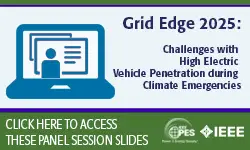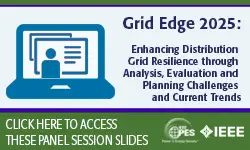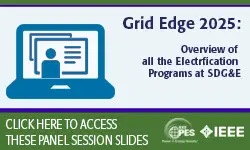-
Members: FreePES
IEEE Members: $11.00
Non-members: $15.00Pages/Slides: 38
20 Feb 2018
The power grid needs the flexibility to accommodate change. One example is the integration of distributed energy resources such as variable renewable generation, storage, and responsive demand. Energy systems are being revolutionized by the deployment of intelligent devices and systems that offer more flexibility to coordinate operation of grid infrastructure with end-use systems. The key to delivering greater flexibility in the face of change is interoperability, the ability to integrate different devices and systems simply so they operate and work. To enable efficient grid operation, the electricity industry must have access to interoperability criteria, methodologies, and tools that simplify the integration and secure interaction among the many devices and systems that make up the grid. The US Department of Energy's Grid Modernization Initiative is sponsoring an effort to provide a strategic vision for smart grid interoperability to be used as a direction-setting guide for developing roadmaps that simplify the effort to integrate the intelligent equipment appearing at all levels of the system and either end of the meter. This involves proposing tools to measure the state of interoperability, methods to develop roadmaps for addressing today's integration challenges toward a desired future vision, and instruments to encourage the participation of stakeholders to come together and establish the appropriate agreements that will enable straightforward and dependable connections.


